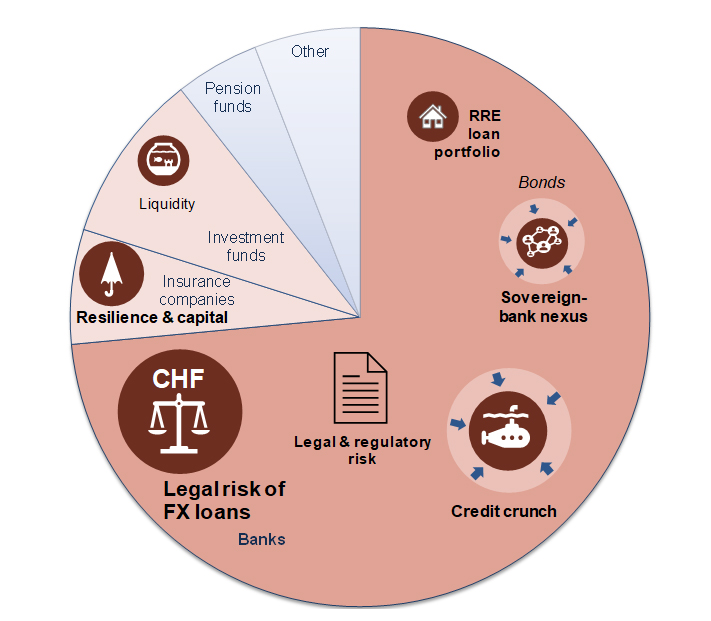Financial Stability Report, December 2023
The financial system is stable and the risk balance is improving.
The current assessment and prospects for the stability of the domestic financial system have improved.
The previously indicated risk of diminishing of banks’ capital surpluses and credit rationing in the economy has significantly decreased. This became possible due to the banks’ high profits, largely retained in own funds, and the issuances of debt instruments eligible for MREL.
The level of capital in the banking sector is sufficient to cover potential losses resulting even from extreme macroeconomic scenarios. Banks also show high resilience to liquidity risk.
The portfolio of foreign currency housing loans remains the main risk, affecting the future financial results of banks. However, the level of provisions and the ongoing settlement process allow to assess that the costs of this risk should not pose a threat to the stable functioning of the banking sector.
Uncertainty regarding legal and regulatory conditions may affect banks’ willingness to finance the economy and investors’ assessment of the domestic market attractiveness. At the same time, an important issue is the consistent implementation of the interest rate benchmarks reform.
In the National Bank of Poland opinion, the implementation of the following recommendations will contribute to the stability of the national financial system.
1.Reduction of legal and regulatory risk
The uncertainty of the legal and regulatory environment in which banks operate should be reduced.
It is advisable to take action to eliminate legal doubts related to the method of regulating compensation for early repayment of fixed-rate mortgage loans.
2. The reform of interest rate benchmarks
The updated benchmark reform schedule should be implemented without further delays, requiring the determination of all stakeholders.
3. Appropriate targeting of support for borrowers
Support for borrowers, provided for in a law, whose costs would be paid by banks or the public sector, should be limited only to people who are financially distressed.
4. Settlements in FX housing loan cases
Banks and borrowers should continue to reach settlements in FX housing loan cases, thus con-tributing to accelerating the pace of dispute resolution.
5. Fulfillment of the MREL requirement with eligible debt instruments
Banks should continue to seek to comply with MREL with a significant share of eligible debt instruments.
6. Releasable capital buffers
It is advisable to implement a non-zero level of releasable macroprudential capital buffers.
7. Increase of the efficiency and resilience of the cooperative banking sector
It is desirable that cooperative banks use their high earnings to increase their development potential.
8. Adequate assessment of the solvency of insurance companies and their retention of profits
When making solvency assessments of insurance companies it is advisable to consider the risk stemming from a high share of expected profits from future premiums in own funds and double gearing of capital.
It is desirable that life insurance companies earmark a bigger part of profits to increase their capital, especially in the period of record high financial results in recent months.
9. Reduction of the liquidity mismatch between assets and liabilities in the investment fund sector
It is advisable that the liquidity profile of the assets corresponds to the frequency of redemption of participation units.
